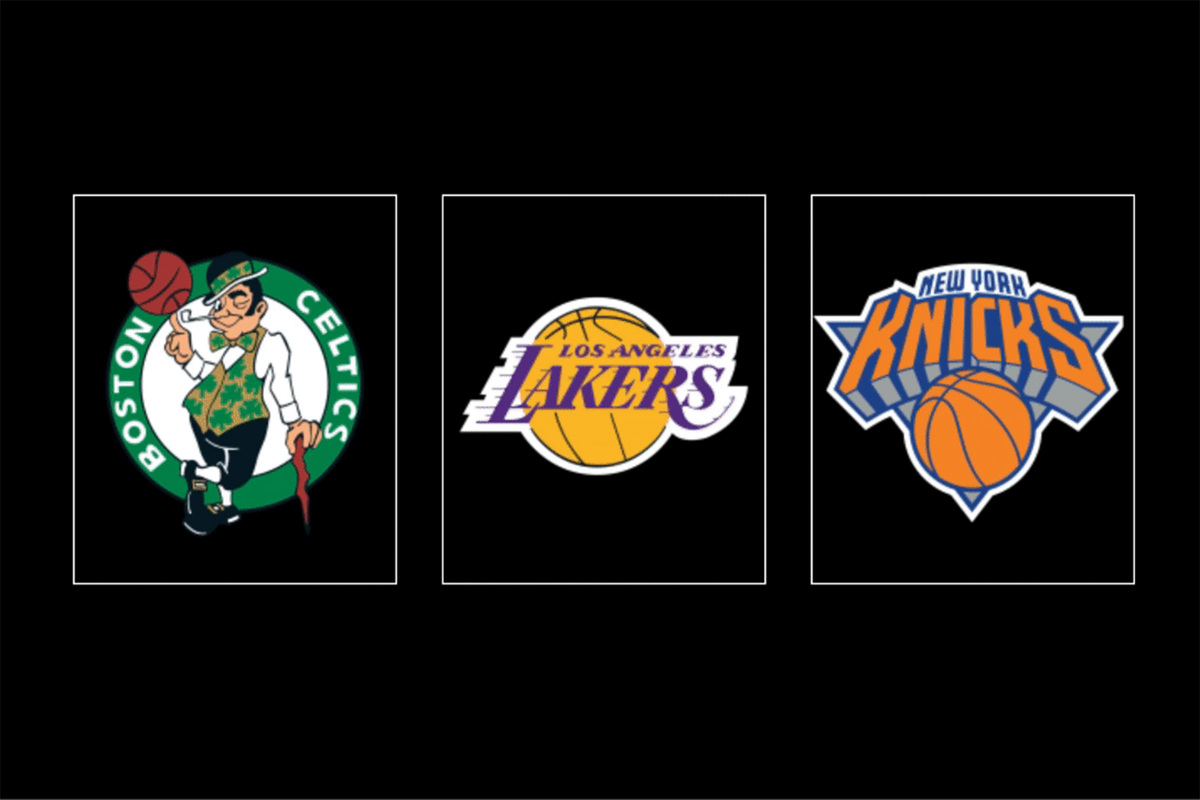Coming off a blowout win on Saturday night, the Lakers have a 2-1 series lead over the Warriors in a conference semifinals matchup that—thanks to the names, statures, and sheer talent involved—holds the weight of something more.
The story of Game 3 was Anthony Davis. He’s now been the best player in both Lakers wins, bulldozing through Golden State’s frontcourt on one end and single-handedly stonewalling its entire roster on the other. If the Warriors are going to win three of the next four games (which is still entirely possible), they’ll need to find some way to blunt AD’s impact, particularly on the defensive end.
Before Game 3 slid into garbage time, the Warriors’ offense puked up 97 points per 100 possessions, good for their second-least efficient performance of the entire season. The simplest way to clean up those offensive issues has little to do with the game plan: Don’t turn the ball over, stop committing fouls, and, um, make more shots.
That all sounds reductive—particularly knowing that the Warriors posted their lowest turnover rate of the season in a narrow Game 1 loss—but when you consider that Golden State’s shot quality is the second highest any team has had in a series this postseason (only the Celtics were better in their first-round matchup against the Hawks) and that the team’s assist rate is a silly 74 percent, possessions that don’t result in a shot are especially damaging.
A further thought on the free throw disparity (which stands at 83 for the Lakers and 39 for the Warriors) is that allowing Los Angeles to constantly set up its half-court defense and bail out its porous half-court offense does you no good. Some of this is out of the Warriors’ control (horrendous whistles are part of the playoffs), but some of it’s also thanks to how often they allow deep dribble penetration, swipe down at the ball, and guard with their hands instead of moving their feet. Klay Thompson can control fouling Austin Reaves on a rip through 28 feet from the basket. The bonus is a dead zone.
Here are three actual strategic alterations the Warriors can make heading into Game 4:
More Steph Curry Pick-and-Rolls!
I’d start with the same adjustment Steve Kerr has repeatedly made whenever Golden State’s back has been against the wall: Go small(er), open the playbook to the page that focuses on Steph Curry–Draymond Green pick-and-rolls, tear it out, then throw the rest away. As the most strenuous, unsolvable pick-and-roll tandem in NBA history, they ripped the Lakers to shreds in Game 2.
According to Second Spectrum, Green set a ball screen for Curry 12 times in Golden State’s only win of the series. On a per-100-possession basis, that frequency was a playoff high. In Game 3, we saw that screen only six times (14.3 per 100 possessions), largely thanks to Green’s foul trouble and Darvin Ham’s wise decision to move Jarred Vanderbilt from Curry to Draymond, which allowed the Lakers to switch without surrendering an obvious advantage.
Vando is awesome, but he shouldn’t be a deterrent. When the Warriors don’t use this play as often as they should, it almost feels like they have willingly entered a fistfight with one arm tied behind their back. When Green sets a ball screen for Curry in this series, it generates a staggering 1.37 points per possession. Make or miss, these plays regularly lead to a very good shot:
Too often, the Warriors have relied on their off-ball magic for answers, and it did supply some good looks in Game 2 (especially for Thompson whenever Rui Hachimura was on him). But the Lakers have also done an excellent job of top-locking Golden State’s shooters for the most part, funneling them into the paint toward Davis. It’s a slog creating quality shots with an autopilot offense against the Lakers’ scheme. The Warriors have to be more purposeful, as they were in Game 7 of the first round, when Steph and Draymond ran 20 pick-and-rolls—their most in a playoff game since 2015.
Instead, in Game 3, Steph and Draymond ran zero pick-and-rolls in the first quarter. Only two of their eventual six came with Vanderbilt on the court. On their first, Reaves fouled Draymond at the point of attack. On their second, Golden State ran a stack pick-and-roll, got a switch, and eventually broke through with a backdoor layup for Thompson:
If the Lakers’ switching is so bothersome, how about setting the picks closer to midcourt … or setting none at all? Just have Curry bring the ball up the floor, dust Reaves one-on-one, and play off the advantages that spring from L.A. being in a defensive rotation.
Even when its base pick-and-roll doesn’t yield a bucket, Golden State should feel good about a four-on-three advantage with the ball in Draymond’s hands or Curry launching a pull-up 3, be it over drop coverage or in isolation. This play is the NBA’s great catch-22. To date, it’s helped the Warriors win four championships, and there’s still no blueprint to stop it.
Change the Starting Lineup
Spacing is paramount when Davis is controlling the paint. In Game 2, Kerr’s decision to put JaMychal Green in the starting lineup over Kevon Looney was seen as a revelatory solution. He went 3-for-6 behind the arc and scored 15 points, tying his second-highest mark of the season. In the series, that unit (Steph, Klay, Andrew Wiggins, Draymond, and JaMychal) is manufacturing a respectable 1.16 points per possession in the half court.
But watch these games, and it’s not like JaMychal’s outside shot is drawing any defenders to the perimeter. He has very little gravity, and on nights when he goes 0-for-3 from downtown (like he did in Game 3, when that starting lineup was minus-10), it’s hard to see what his purpose is in this series.
Assuming Looney is healthy, the Warriors may want to start their best five players, run more pick-and-rolls, ambush the offensive boards, and bet that their half-court defense will catapult them into open-floor opportunities the other way. Davis is more hesitant to come off Looney in the dunker spot than he is JaMychal in the corner, whether he’s spotting up or crashing in.
If reinserting Looney feels untenable because of spacing problems, Donte DiVincenzo and Moses Moody are potentially a couple of two-way salves worth trying (Jordan Poole’s defense is a fiasco, which makes starting him a challenge against LeBron James, who was willing to matchup hunt in Game 3).
The glass would be an issue against a jumbo Lakers lineup that features Davis, LeBron, and Vanderbilt. It would also likely force Draymond to guard Davis from the start, where foul trouble (as we saw Saturday) is an obvious concern.
But going small creates some demanding matchup questions for the Lakers. Do they move Davis back onto Draymond or just stick him on a guard? If it’s the former, does Vanderbilt shift back to Curry? Los Angeles’s response to such a spread floor would be critical.
Kerr closed Game 1 with the Pool(e) Party. That group went on a 14-0 run and finished plus-seven in the last 6:39. It’s plus-7.5 in the series yet somehow didn’t log a second in Game 3. Long before things got out of hand, the Warriors had some success downsizing in the first quarter, putting Thompson at the 4 with Looney, DiVincenzo, Moody, and Poole. (Davis was indeed on the court too.) They also started the fourth quarter with Steph, Klay, Draymond, Moody, and Gary Payton II (who played the entire period).
Big picture: It’s hard to envision the Warriors going down with JaMychal Green in the starting lineup. The Lakers are too comfortable when he plays. And the Warriors have too many superior options at their disposal.
Utilize Andrew Wiggins
Before this series began, I wrote about Andrew Wiggins as a mismatch for the Lakers. Despite respectable shooting splits, he’s averaging only 14 points. And after sticking D’Angelo Russell on him for large chunks of Games 1 and 2, the Lakers made LeBron James his primary defender in Game 3. Wiggins saw only four possessions against Russell.
Golden State’s execution wasn’t aimless on these plays—it ran a couple of empty-corner pick-and-rolls with Steph and Draymond and tried to get Thompson something off of a wide pindown—but Russell can’t stop Wiggins. Not even close. There’s a good chance that if he posted DLo up or set a ball screen for Curry (instead of Draymond Green, who brought AD’s long arms into the fray), the Warriors would’ve had more efficient possessions while also forcing Ham to think about removing one of his most potent shooters from the game.
Here’s what happened in the first round when Golden State had Wiggins attack De’Aaron Fox on the block. He’s good at it!
And here’s Wiggins’s only post-up (!) of the entire series:
Even when James is on Wiggins, the Warriors shouldn’t see LeBron as an elite on-ball defender. Any opportunity to make him work is a win. For Wiggins, that means picking his spots, attacking the offensive glass, and sprinting into more high ball screens for Curry (or Poole). The result on the play below isn’t ideal, but it shows the right way to attack the Lakers (and would look even better if the Warriors did a better job spacing the floor):
The Warriors still have cards to play. They’ve been down 2-1 before, against better teams, and have prevailed. But this version of Davis is a dilemma unlike any they’ve ever seen. Against a dominant rim protector who’s able to step out and bother actions on the perimeter, Golden State’s offense has its hands full. But if the defending champions lean more toward some foundational tenets, there’s good reason to believe that the roles shall reverse in this series, and the Lakers will be the ones on their heels going into Game 5.

